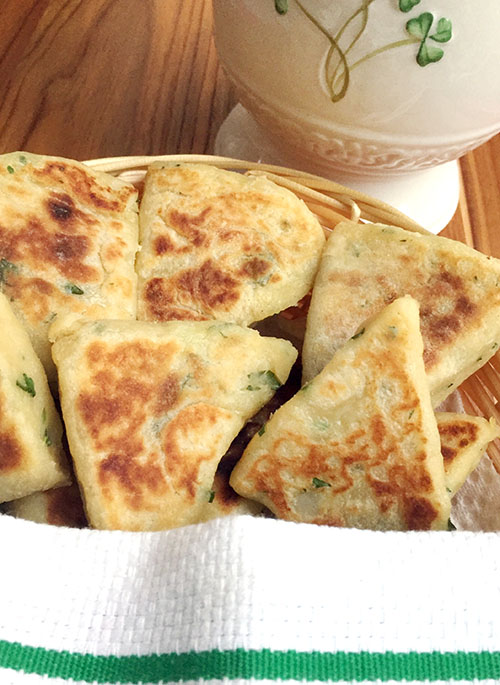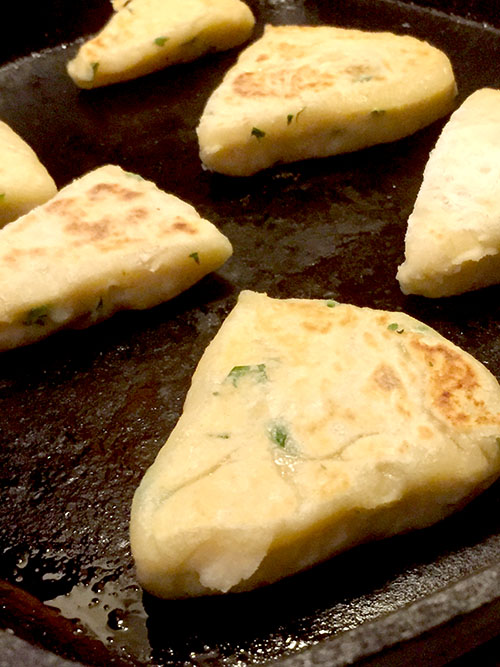 [T]hroughout the year, I mark (via Post-it, bookmark or scrap of torn envelope) interesting recipes in my cookbooks that I think I might want to try at some point.
[T]hroughout the year, I mark (via Post-it, bookmark or scrap of torn envelope) interesting recipes in my cookbooks that I think I might want to try at some point.
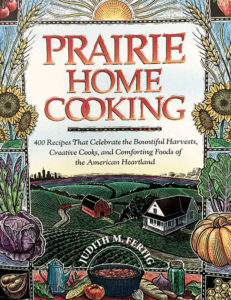 Sometimes, this really yields treasure, particularly, if one of my books has been neglected. I’m not sure where or when I picked up “Prairie Home Cooking†by Judith Fertig (The Harvard Common Press; 1999). I think I have a few cookbooks published by the same publisher. They are attractive without even having photos, nicely packaged and packed full of inviting recipes. I had the cookbook for awhile, then this past summer, I picked it up again and began marking page after page of recipes I wanted to make, mostly breads.
Sometimes, this really yields treasure, particularly, if one of my books has been neglected. I’m not sure where or when I picked up “Prairie Home Cooking†by Judith Fertig (The Harvard Common Press; 1999). I think I have a few cookbooks published by the same publisher. They are attractive without even having photos, nicely packaged and packed full of inviting recipes. I had the cookbook for awhile, then this past summer, I picked it up again and began marking page after page of recipes I wanted to make, mostly breads.
The Irish Potato Griddle Scones sounded perfect for St. Patrick’s Day. The cookbook author recalled her Irish roots and shared the recipe as an old one honoring her ancestors. These unusual scones, 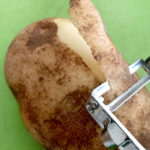 made with one cup of mashed potato, are little triangles — thinner than typical scones — cooked in a skillet or on a griddle, like pancakes. Noodling around the Internet I discovered similar-looking breads that are called “tattie scones,†a Scottish bread that is usually served at breakfast. “Tattie†is a Scottish term for potato.
made with one cup of mashed potato, are little triangles — thinner than typical scones — cooked in a skillet or on a griddle, like pancakes. Noodling around the Internet I discovered similar-looking breads that are called “tattie scones,†a Scottish bread that is usually served at breakfast. “Tattie†is a Scottish term for potato.
The Irish Potato Griddle Scones seemed simple and old-fashioned, with but a few ingredients. A potato gets this recipe started, I cooked a single, peeled, chopped baking potato until tender, then coarsely mashed it.
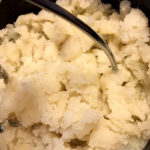
The potato was blended with melted butter, a beaten egg and chopped parsley, then a small amount of flour is gradually added in. It was curious to me that there was neither salt nor leavening. I couldn’t resist, so I threw in about 1/2 teaspoon of salt for taste purposes.
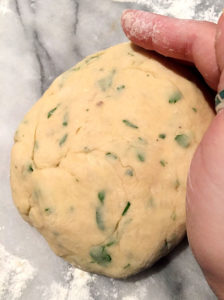 The very soft, sticky dough was kneaded for a few minutes. I was concerned that it would not develop a true elastic-y bread texture, but after I kneaded for a bit, adding flour on the board as “needed,†it formed a smooth, cohesive dough.
The very soft, sticky dough was kneaded for a few minutes. I was concerned that it would not develop a true elastic-y bread texture, but after I kneaded for a bit, adding flour on the board as “needed,†it formed a smooth, cohesive dough.
The dough was divided in half, with each half formed into a small circle and cut into wedges (a total of 16). I thought the bits of green from the parsley (kind of giving them a spring tone) looked colorfully Irish in the golden dough.
The scones were small and thin, which made them cook fairly quickly on an oiled cast-iron skillet, a few minutes per side to get them to a nice golden brown.
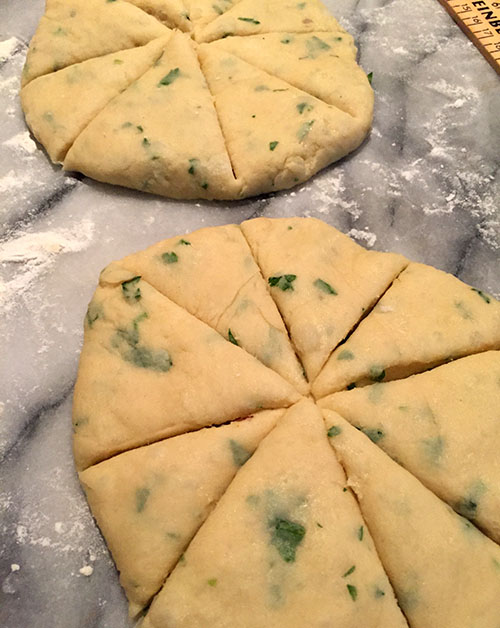 They resembled a type of thick tortilla/pita or flatbread. Upon tasting, a third — and prominent — element entered the picture, making this bread an intersection of moist potato pancakes meeting naan meeting soft flour tortilla. The bright spring-green taste of the bits of parsley made me consider the possibility of future makings using chopped chives or finely diced spring onions. Though there were many, these little bread bites went fast, perfect as a dipping side with a nice bowl of bean soup.
They resembled a type of thick tortilla/pita or flatbread. Upon tasting, a third — and prominent — element entered the picture, making this bread an intersection of moist potato pancakes meeting naan meeting soft flour tortilla. The bright spring-green taste of the bits of parsley made me consider the possibility of future makings using chopped chives or finely diced spring onions. Though there were many, these little bread bites went fast, perfect as a dipping side with a nice bowl of bean soup.
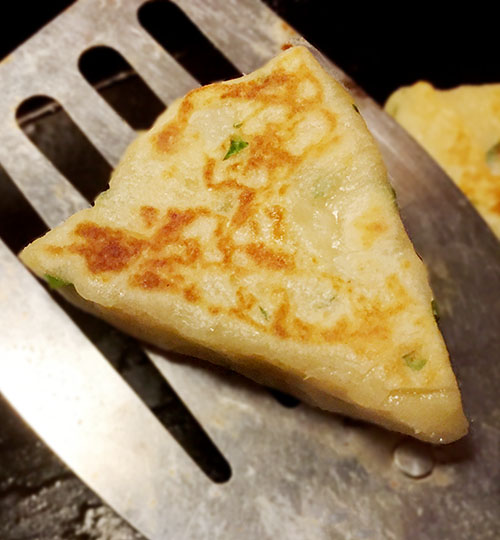
Irish Potato Griddle Scones
From “Prairie Home Cooking†by Judith Fertig (1999)
Makes 16 small scones
1 large baking potato, peeled and coarsely chopped
4 tablespoons unsalted butter, melted
1 large egg, beaten
1/4 cup minced fresh parsley
3/4 cup unbleached all-purpose flour
Place the chopped potato in water to cover in a small saucepan. Bring to a boil, and cook for 10 minutes, or until the potato is just tender. Pour off the water and return the pan briefly to medium-high heat to evaporate any extra water. Mash the potato coarsely. Measure 1 cup of potato into a mixing bowl. Stir in the butter, egg and parsley until the mixture is evenly blended. Stir in half the flour, mix well, add the remaining flour and stir well again.
Turn out the dough on a floured board. Knead the dough for 3 to 4 minutes, until it is smooth and elastic. Cut the dough in half. Roll out one half on a floured board into a circle about 6 inches in diameter. Repeat the process with the remaining half of the dough.
Heat a cast-iron skillet or griddle and brush the surface with vegetable oil. Cook the scones, 6 to 8 at a time, for about 5 minutes on each side, until they are puffed and lightly browned, Transfer to a plate and cover with a tea towel to keep warm as you cook the remaining batches. Serve hot or at room temperature.
Blogger’s Note: I added about 1/2 teaspoon of salt to the ingredients just prior to mixing in the flour. I began cooking the scones on medium heat, but lowered the temp to just below medium for he duration of the scones cooking.
